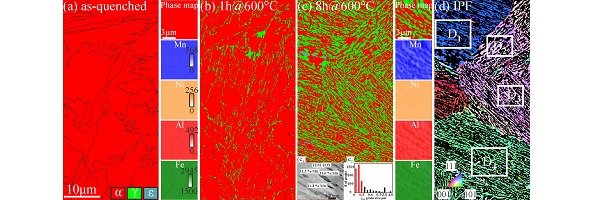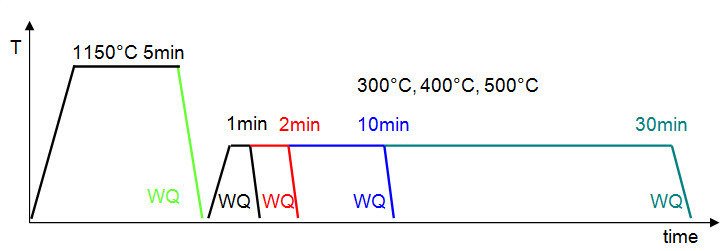
Advanced design of a ductile 2 GPa Fe-Cr-C martensitic-austenitic steel by nanoscale austenite reversion through partitioning, segregation, and kinetic freezing
Austenite reversion during tempering of a Fe-13.6Cr-0.44C (wt.%) martensite results in an ultra-high strength ferritic stainless steel with excellent ductility.

The austenite reversion mechanism is coupled to the kinetic freezing of carbon during low-temperature partitioning at the interfaces between martensite and retained austenite and to carbon segregation at martensite-martensite grain boundaries. An advantage of austenite reversion is its scalability, i.e., changing tempering time and temperature tailors the desired strength-ductility profiles (e.g. tempering at 400°C for 1 min. produces a 2 GPa ultimate tensile strength (UTS) and 14% elongation while 30 min. at 400°C results in a UTS of ~ 1.75 GPa with an elongation of 23%). The austenite reversion process, carbide precipitation, and carbon segregation have been characterized by XRD, EBSD, TEM, and atom probe tomography (APT) in order to develop the structure-property relationships that control the material’s strength and ductility.
